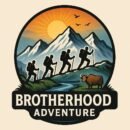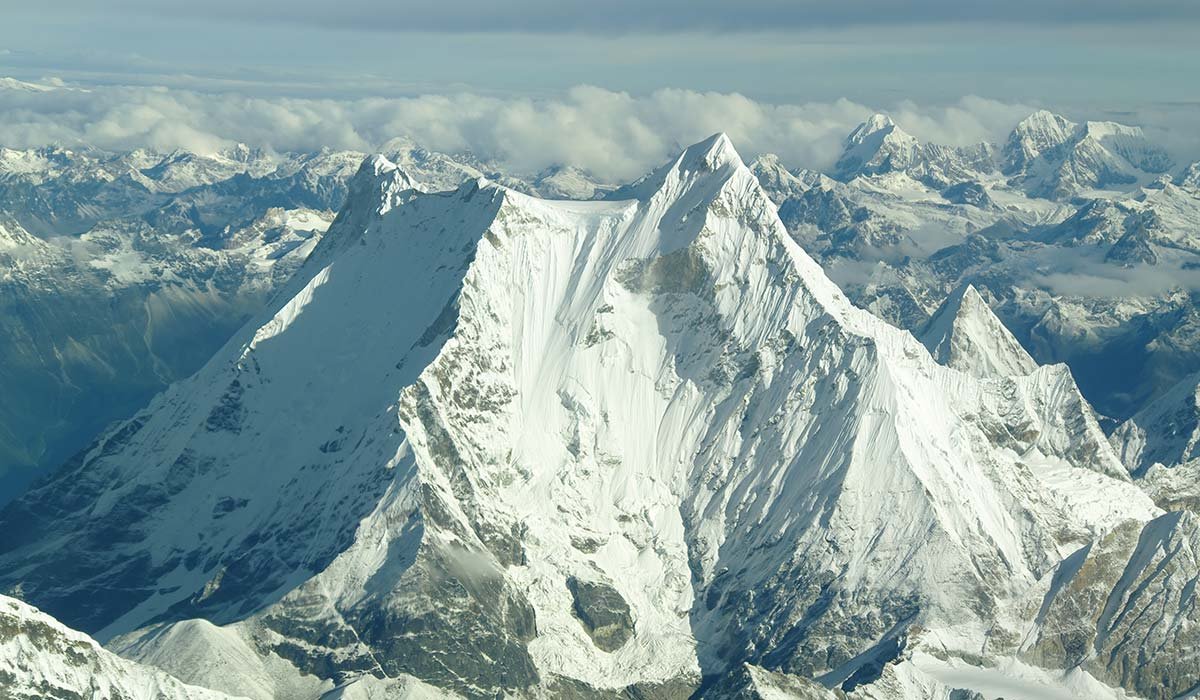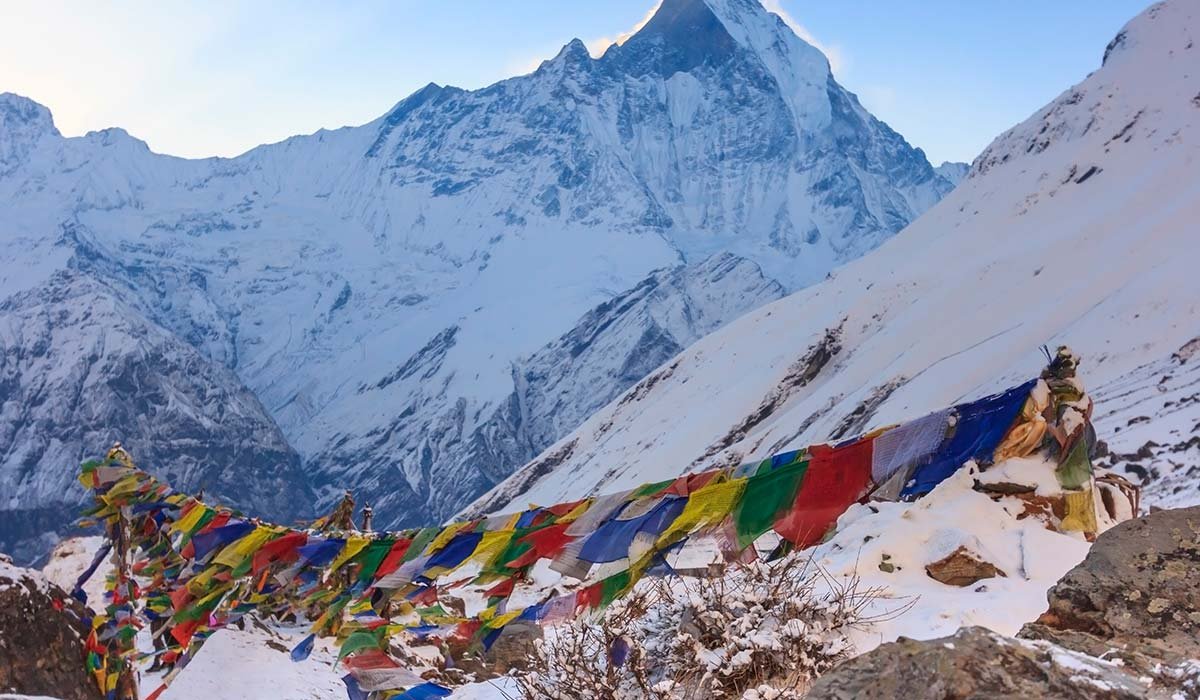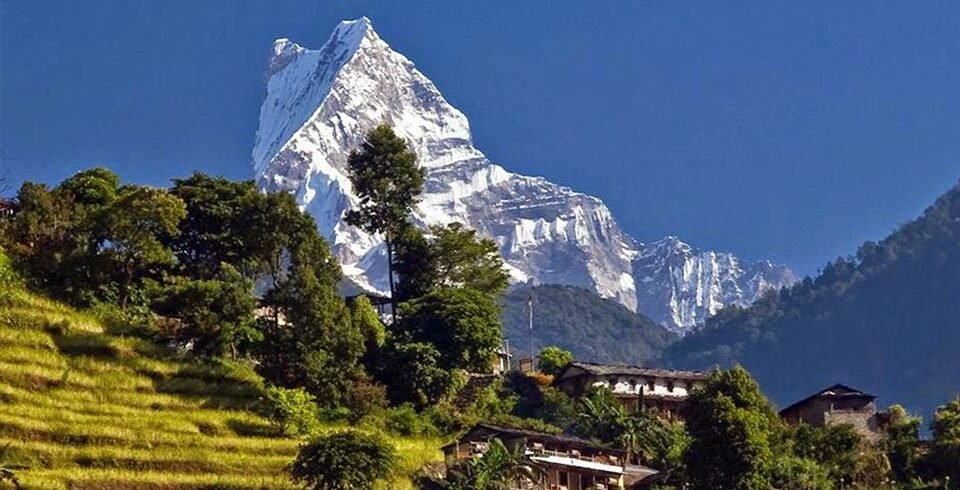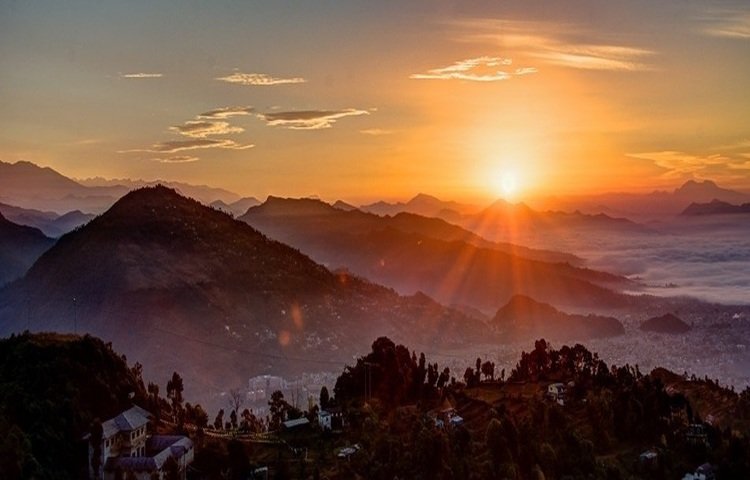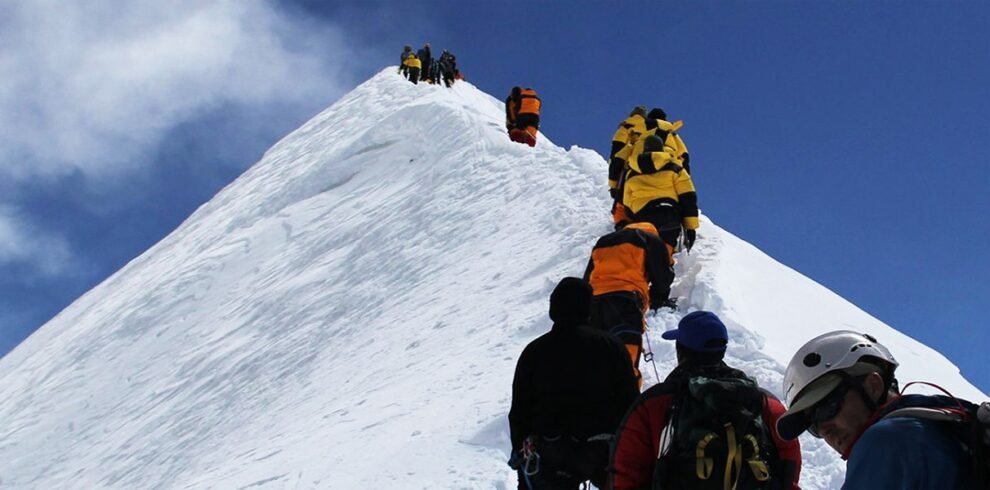The Rolwaling Valley Trek, located within Nepal’s Gaurishankar Conservation Area (GCA), is a moderately challenging teahouse trek situated between Langtang National Park and the Everest (Khumbu) region. Part of the Great Himalaya Trail, this quiet and less-traveled route runs parallel to the Tibetan border, offering a peaceful trekking experience away from the crowds.
The largest settlement in the valley is Beding, a traditional Sherpa village reached after a 3-day walk from Gonghar Khola. The trek can be extended by crossing the high-altitude Tashi Lapcha Pass (5,755m) into the Everest region, which requires basic mountaineering skills, experienced guides, and a permit for Pachermo Peak.
Trip Info
-
Hotel/Lodge/Tea House during the trek
-
March - June and September - November
-
4500m.
-
Fly/Car/Jeep/ Bus
-
5/6 hours
Overview
Rolwaling Valley Trek’s difficulty level is classified as average. It takes place in remote, secluded, and backwood corners of the high Himalayas, which presents several challenges. The terrain is rugged, with trails that ascend and descend steeply. In addition, you have to walk for long hours each day of the trek.
Trip Highlights
- Trekking trip in the route where less people visits.
- Walk through the lush green jungle along the Rolwalng Khola (River).
- Rolwaling; the home of Sherpas who involve in mountaineering most.
- Prayaers engraved mani walls and rocks.
- Tso Rolpa Glacier Lake and Dudh Kunda.
- Splendid View of Mountain Vista from Yalung Ri Peak.
Itinerary
Upon your arrival at Tribhuvan International Airport in Kathmandu, our representative will greet you and transfer you to your hotel. After check-in and some rest, you’ll attend a trek briefing in the evening where your guide will go over the Rolwaling Valley Trek itinerary, safety tips, and permit preparations. Overnight stay at a hotel in Kathmandu.
Your day starts with an early breakfast in Kathmandu, preparing you for the trek to Shigati. Leaving the city’s lively streets behind, you’ll set off on a scenic drive. The road meanders through the verdant hills of the Kathmandu Valley, offering beautiful views of terraced fields and charming villages.
As you continue, the scenery shifts, revealing the more rural heart of Nepal. The drive provides a glimpse into the everyday lives of the locals, with farmers working their fields and children playing in the villages. This peaceful rural setting offers a refreshing contrast to the urban buzz of Kathmandu.
After spending about 7 to 8 hours on the road, you’ll arrive in Shigati, a small village perched on the edge of the Rolwaling Valley. Shigati serves as the official starting point of your trek. The village’s simplicity and tranquility provide a perfect place to relax after a long drive and prepare for the trek ahead.
Once in Shigati, you’ll settle into a local teahouse for the night. This evening, take the opportunity to organize your gear and ensure everything is ready for the next day’s trek. Shigati’s peaceful surroundings create an ideal environment for rest and acclimatization before you begin your trek.
Today, your trekking adventure truly begins as you set out from Shigati toward Simigaun. The trail initially follows the Tamakoshi River, where the sound of the flowing water accompanies your trek into the wilderness. You’ll wind through dense forests, alive with greenery and the calming sounds of nature, creating a refreshing start to your day.
Trekker approaching a traditional stone house in Simigaun village, surrounded by misty hills and lush greenery.
A trekker approaches a traditional stone house in Simigaun, a serene village in Nepal’s Rolwaling Valley, known for its cultural heritage and lush, misty landscapes.
As you move forward, the path takes you through several small, picturesque villages. These villages, with their traditional homes and terraced fields, offer a glimpse into the fulfilling lives of the local communities. The villagers, known for their warmth, often greet you with friendly smiles, making the ascent feel more personal and rewarding.
The terrain gradually becomes steeper, making the trek more challenging. Each step upward requires effort, but the unfolding views of rolling hills and distant mountains make the trek worthwhile. With every gain in altitude, the scenery becomes even more expansive, leaving you with a deep sense of accomplishment and wonder.
After 5 to 6 hours of trekking, you’ll arrive in Simigaun, a Sherpa village perched high on a ridge. Simigaun serves as an ideal resting spot for the night, with its traditional homes and stunning views of the surrounding landscape. The village’s elevated location offers a peaceful setting to relax and recharge, overlooking the valley below as you prepare for the next day’s trek.
Your Rolwaling Valley Trek continues as you leave Simigaun and head toward Kharka. You start the day trekking through dense rhododendron forests, where the vibrant colors and rustling leaves create a calming atmosphere. As you move along the trail, you cross several small streams, enhancing the serene trekking experience in one of Nepal’s most remote areas.
As you trek, the landscape gradually changes. The lush forests give way to open spaces, and the towering peaks of the Himalayas appear on the horizon. The higher altitude becomes noticeable as the air cools and the vegetation thins, signaling your approach to Kharka. This high-altitude pasture, where local herders bring their livestock, uniquely contrasts the dense forests you just traversed.
Today’s trek requires steady effort, especially as you gain altitude, but the stunning scenery at every turn makes it worth the challenge. Now clearly visible, the distant peaks provide an awe-inspiring backdrop as you draw closer to your destination. The sense of solitude and the raw, untouched beauty of the Rolwaling Valley Trek become even more apparent as you ascend higher into this isolated region.
After 6 to 7 hours of trekking, you reach Kharka, where you will establish your camp for the night. The serene atmosphere that abounds here is one thing that makes it a perfect place to camp. The expansive pastures have excellent visibility for a better view of the surrounding mountains. When night falls, and the stars start filling the sky, you can feel the peace in this part of the Himalayas while preparing for another day of wandering across the Rolwaling Valley Trek.
You continue your Rolwaling Valley Trek as you move from Kharka to Beding, one of the largest and most important settlements in the Rolwaling Valley. The day begins with a trek through vast alpine meadows, where the open landscape provides clear views of the surrounding peaks. Along the trail, you pass ancient mani walls carved with Buddhist prayers and mantras, adding a spiritual touch to your walk.
As you advance, the majestic Gauri Shankar, one of the region’s most revered mountains, becomes increasingly dominant. The sight of this towering peak, along with other nearby mountains, creates a breathtaking backdrop. The trail is less demanding than the previous day’s, but the rising altitude serves as a reminder of the challenges ahead.
Traditional stone houses in Beding Village, nestled on a hillside in the Rolwaling Valley, Nepal.
A view of the traditional stone houses in Beding Village, a key stop along the Rolwaling Valley Trek in Nepal. The village is set against a backdrop of rugged mountains and offers trekkers a glimpse into the local Sherpa culture.
Approaching Beding, you notice a shift in the environment. The valley narrows, and soon you see the village, nestled between towering cliffs and peaks. Beding, with its traditional stone houses and fluttering prayer flags, presents a picturesque and welcoming scene. This village is a significant stop on the Rolwaling Valley Trek, offering insight into the Sherpa culture in this remote area.
Come to Beding after hiking for five or six hours; you will sleep in a local teahouse. The teahouse’s comfort and the beautiful mountains surrounding the village create an ideal place to rest and think over the day. While staying in Beding, you feel proud to have come to such a remote area of Rolwaling Valley; simultaneously, you want to know what comes next during this fantastic trek.
In Beding, today is made only for acclimatization and your higher altitude adjustment. This rest day is crucial so that you can prepare well for heights.
You can have a short hike around the village, which offers spectacular views of the surrounding peaks and the natural beauty of Rolwaling Valley up close. Otherwise, you may visit a local monastery to grasp the spiritual side of Sherpa culture.
If you are looking for a more relaxed day, enjoy the mountain scenery from the village. Relaxing today will assist your body in acclimatizing correctly, which is vital to ensuring success and safety during the remaining parts of your trek.
So, after spending one whole day in Beding to get used to the weather, your Rolwaling Valley Trek proceeds to Na, the highest permanent place in the valley. The road becomes an inclined path, allowing you to breathe as you begin to feel better with increasing altitude while visualizing the ranks of huge mountains surrounding you on both sides and an empty sweeping expanse below. While ascending upward towards them, more extreme sights within this picturesque region gradually reveal themselves.
The path winds through alpine meadows and passes ancient mani walls adorned with Buddhist prayers, adding a spiritual element to your trek. The views grow more spectacular as you approach Na, with towering mountains creating a majestic backdrop to the valley. This stretch of the trek stands out for its sense of isolation and the raw beauty of the landscape, making it particularly memorable.
After trekking for 4 to 5 hours, you arrive in Na, a serene village at the foot of towering peaks. With only a few teahouses and lodges, Na provides a peaceful and quiet place to spend the night. The village’s simplicity and stunning natural surroundings offer the perfect environment for relaxation and reflection.
Once you settle in Na, you can explore the surrounding area with short hikes that offer even more incredible views of the valley and nearby mountains. This tranquil setting allows you to rest and recharge, preparing yourself for the higher altitudes and more challenging treks that await on the Rolwaling Valley Trek.
Next in line for your Rolwaling Valley Trek is Tso Rolpa, one of Nepal’s most beautiful glacial lakes. The path from Na to Tso Rolpa rises slowly but surely, tracing the path of the Rolwaling River as it curves around the valley. With increasing elevation, our surroundings are considerably rugged, characterized by rocks scattered about and glacial moraines.
As you trek, the views of the surrounding peaks grow increasingly imposing, creating a dramatic backdrop as you approach the lake. The trek is challenging, but every step brings you closer to the turquoise waters of Tso Rolpa. Reaching the glacial lake, surrounded by snow-capped mountains, is often considered the pinnacle of the Rolwaling Valley Trek, a moment many trekkers cherish.
After trekking for 6 to 7 hours, you reach the shores of Tso Rolpa. The lake’s serene, almost otherworldly beauty contrasts sharply with the rugged landscape surrounding it. The deep turquoise waters, framed by towering snow-covered peaks, create a breathtaking scene that will leave a lasting impression.
You’ll camp near the lake and spend the night under the stars. The remote location and stunning scenery offer a perfect opportunity for reflection and relaxation. Resting by the edge of Tso Rolpa, you’ll be enveloped by the tranquility and majesty of the Himalayas, marking another unforgettable day on the Rolwaling Valley Trek
After a memorable night at Tso Rolpa, you descend the valley, retracing your steps along the Rolwaling Valley Trek. The trail takes you back through the familiar paths of Na and Beding, offering a new perspective on these charming villages. As you descend, the pace of the trek quickens, but the constantly changing landscapes keep the trek engaging.
The descent allows you to appreciate the terrain in a new light as you move from the high-altitude environment near Tso Rolpa to lower elevations. The towering peaks gradually fade into the background while the lush greenery of the valley starts to reappear. The diverse scenery, shifting from rocky outcrops and glaciers to alpine meadows and forests, makes the trek visually rewarding and stimulating.
After hiking for 5 to 6 hours, you arrive at Dongang, where you will spend your night. The peaceful and calm environment at Dongang is ideal for resting and recollecting what happened during the day. Although it would take less time to descend, such diverse sceneries on Rolwaling Valley Trek will remain in memory.
alley, providing one last opportunity to appreciate the natural beauty of this remote region fully. As you descend, you pass through lush forests, where the sound of the river and the rustling leaves create a peaceful contrast to the rugged terrain of the higher altitudes.
The trek also involves crossing several rivers, where bridges and stepping stones add a touch of adventure. Each crossing provides a unique view of the valley, reminding you of the diverse landscapes you’ve experienced throughout the trek. The gradual descent lets you savor these final moments in the Rolwaling Valley, appreciating the tranquility and raw beauty that define this trek.
After a 5-6 hour hike, you’ll reach Gongar Khola, where you’ll spend your last night in the Rolwaling region. By the river lies Gongar Khola, which makes an appropriate end to this valley. In bed, you think about all those wonderful things that happened during your trekking adventures and how beautiful things are over there as you just walked away from one of the farthest lands of Nepal.
You begin your day with breakfast in Gongar Khola before setting off on the scenic drive back to Kathmandu. As you depart from the Rolwaling Valley, the road takes you through the beautiful landscapes that have accompanied you throughout your trek. The winding mountain roads provide stunning views of terraced fields, lush hillsides, and traditional Nepali villages, offering one last glimpse of this region’s rural charm.
The 7 to 8-hour drive gives you time to relax and reflect on the trek. Each turn in the road reveals new vistas, from cascading rivers to distant mountain peaks, reminding you of the diverse and breathtaking scenery you experienced on the Rolwaling Valley Trek. This drive back to Kathmandu serves as a peaceful moment to absorb the memories and let the experiences of the past days settle in.
Once you arrive in Kathmandu, you check into your hotel and take the opportunity to unwind after the long drive. The city’s comfort contrasts with the trek’s ruggedness, providing a space to reflect on the incredible trek you’ve just completed. Whether you choose to explore more of Kathmandu or rest, the memories of the Rolwaling Valley Trek will remain a cherished part of your trek in Nepal.
A Brotherhood Adventure representative will assist you with your transfer to Tribhuvan International Airport for your onward flight. As you prepare to leave Nepal, you reflect on the unforgettable experiences of your trek and the stunning natural beauty you’ve encountered during your stay.
Includes/Excludes
Includes
- Airport pick-up and drop-off in a private vehicle
- Teahouse/lodge accommodation during the trek (shared rooms)
- All meals during the trek (breakfast, lunch, and dinner)
- Experienced, licensed English-speaking trekking guide
- All necessary permits: Gaurishankar Conservation Area Permit (GCAP), TIMS card
- Ground transportation (Kathmandu to Gonghar Khola and return)
- Government taxes and official service charges
Excludes
- International airfare and Nepal visa fees
- Travel insurance (must include emergency evacuation coverage)
- Personal trekking gear and clothing
- Tips for guide and porter (optional but recommended)
- Personal expenses such as snacks, drinks, Wi-Fi, hot showers, laundry, charging, etc.
- Anything not mentioned in the “What’s Included” section
FAQs
For Rolwaling valley Trek, you will need to make 4 permits: Pachermo peak climbing permit, Gaurishankar Conservation Area entry fee, Sagarmatha National Park Entrance fee (can be made in Nepal Tourism Board at Kathmandu or in Monjo), and Khumbu Pasang Lhamu Rural Municipality Entrance fee (obtained in Lukla).
Choosing the right gear and equipment is important as well for the successful trek to Rolwaling valley. Pack the right gears and equipment but remember, packing as light as possible is the best way to go when trekking to Rolwaling valley. You should read this What to take for travel to get all the details on what you need to pack or carry for Rolwaling Valley Trek.
When it comes to trekking in the mountains, health and fitness of a person plays a vital role. If you are a healthy person without any serious medical problems, Rolwaling Trek is for you but if you have any sorts of medical issues, please consult to your doctor before coming to Nepal for the trek. We will be gaining the high altitude of 6272 m above the sea level which is not a joke. People normally start to have breathing problems above 3000 meters from the sea level, if they have pre-existing health conditions.
Now when it comes to the fitness level required, Rolwaling Valley Trek demands high physical fitness. The trekking includes daily walks of about 4-8 hours and involves many ascents and descents including the highest passes crossing which means you need lots of practices before you start the trekking journey. You will be traversing through the glaciers and highest passes. If you do not have the previous trekking experience, that’s fine but obviously if you have previous experiences, it will be lot easier. For those not having previous trekking experiences, please exercise regularly for at least 3 months prior to your trekking departure. Go for the morning walks, do some jogging as you get time, participate in some cycling activities, etc. This way, you will be good to go for trekking to Rolwaling valley.
